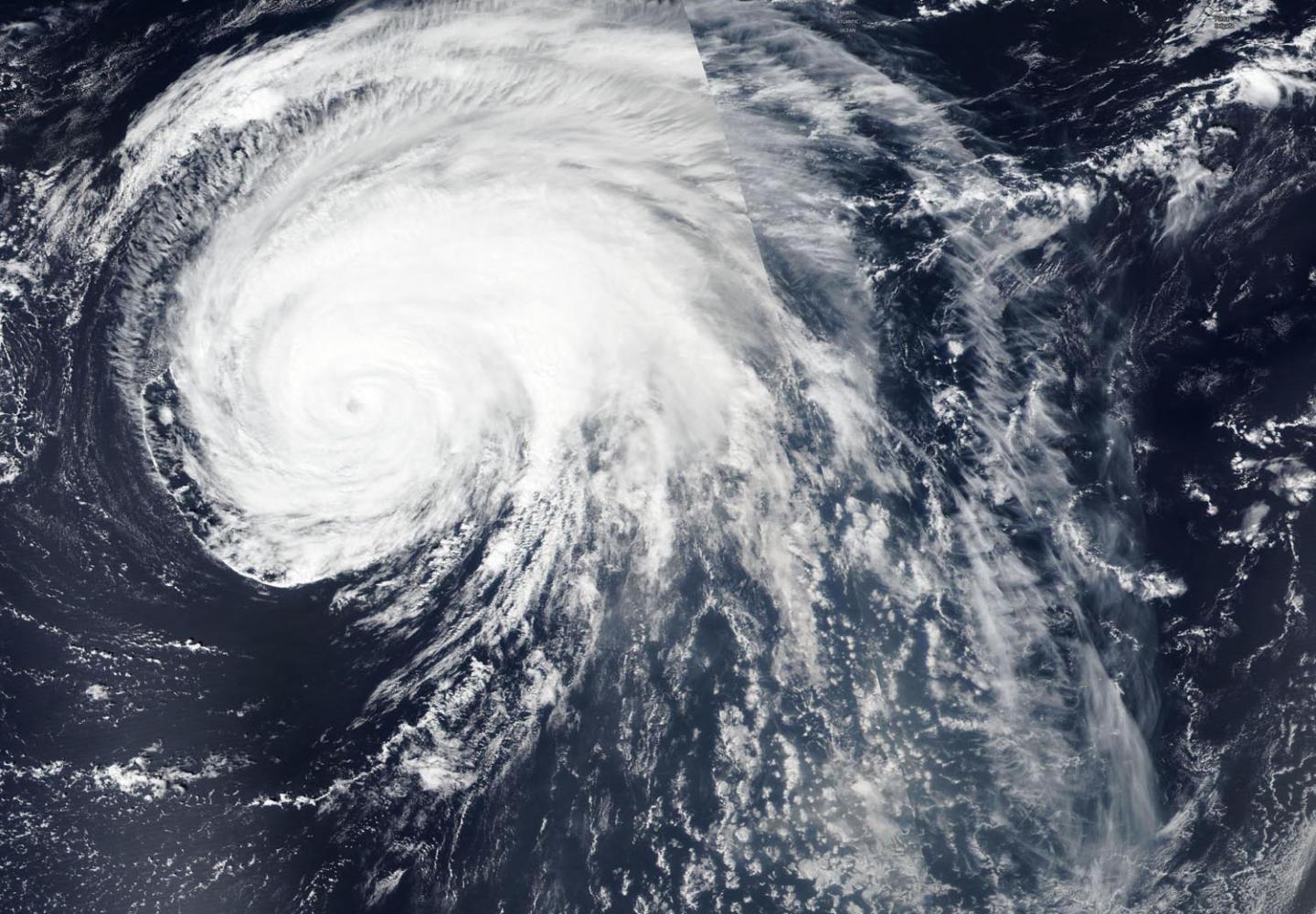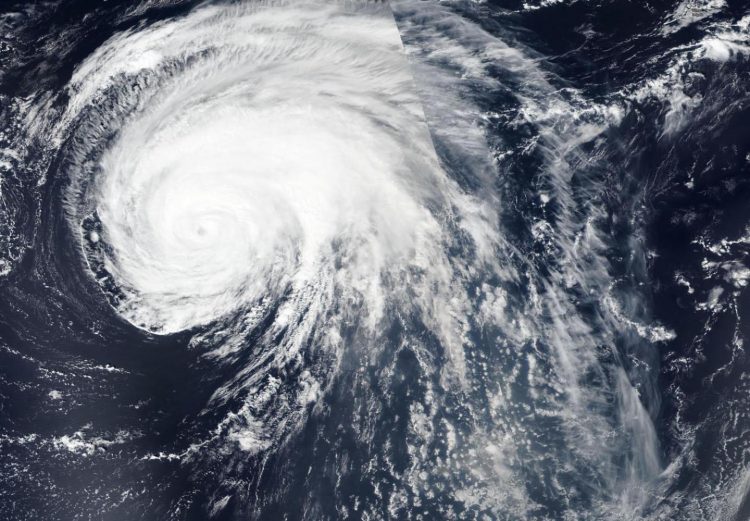
Credit: Credit: NASA Worldview, Earth Observing System Data and Information System (EOSDIS)
Hurricane Lorenzo was heading toward the Azores Islands when NASA-NOAA’s Suomi NPP satellite provided forecasters with an image of the storm. Satellite imagery revealed the large extent of the storm.
Visible imagery from NASA satellites help forecasters understand if a storm is organizing or weakening. The shape of a tropical cyclone provides forecasters with an idea of its organization and strength. The more circular a storm appears, the stronger it can be. The Visible Infrared Imaging Radiometer Suite (VIIRS) instrument aboard Suomi NPP provided a visible image of Lorenzo on Sept. 30 and revealed that Lorenzo has grown in size. In fact, it took two orbits of NASA-NOAA’s Suomi NPP satellite to capture the entire storm. Those two images were stitched together using the NASA Worldview, Earth Observing System Data and Information System (EOSDIS) at NASA’s Goddard Space Flight Center in Greenbelt, Md.
In the VIIRS imagery, Lorenzo’s eye had become less distinct on satellite images over Sept. 30 and Oct. 1, but the system remains very well organized with tightly curved convective bands.
Lorenzo is a very large tropical cyclone. NOAA’s National Hurricane Center or NHC noted that hurricane-force winds extend outward up to 90 miles (150 km) from the center and tropical-storm-force winds extend outward up to 345 miles (555 km).
On Oct. 1, a Hurricane Warning was in effect for islands in the Azores that included Flores, Corvo, Faial, Pico, Sao Jorge, Graciosa, and Terceira. A Tropical Storm Warning is in effect for Sao Miguel, Santa Maria.
At 8 am EDT (1200 UTC) on Oct. 1, the center of Hurricane Lorenzo was located near latitude 34.3 degrees north latitude and 29.0 degrees west longitude. It was centered about 555 miles (895 km) southwest of Flores in the Western Azores Islands. Lorenzo is moving toward the northeast near 22 mph (35 kph). Maximum sustained winds are near 100 mph (155 kph) with higher gusts. Only slow weakening is expected during the next two days. The estimated minimum central pressure is 962 millibars.
Hurricanes are the most powerful weather event on Earth. NASA’s expertise in space and scientific exploration contributes to essential services provided to the American people by other federal agencies, such as hurricane weather forecasting.
On the forecast track, the center of Lorenzo is expected to pass near the western Azores early on Wednesday, Oct. 2.
For updated forecasts. Visit: http://www.
Rob Gutro
NASA’s Goddard Space Flight Center, Greenbelt, Md.
###
Media Contact
Rob Gutro
[email protected]
Original Source
https:/





